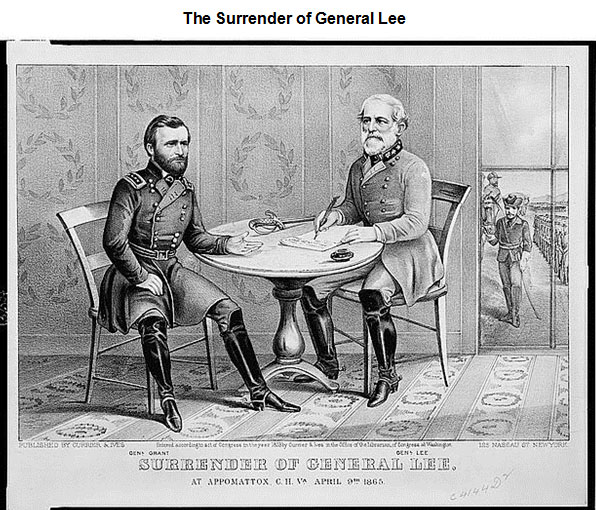
Source: 3c32504r, Currier & Ives, Library of Congress

Source: 3c32504r, Currier & Ives, Library of Congress
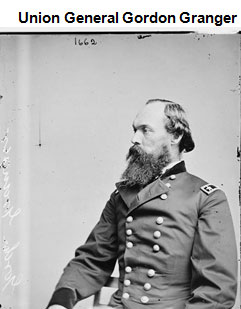
Source: Gordon Granger, Library of Congress
The Civil War ended on April 9, 1865 when General Robert E. Lee surrendered at the courthouse in Appomattox, Virginia. The Confederates lost the war, and casualties of the war were numerous. A divided nation had to find a way to unite itself once again. Confederate states had to deal with a new way of life as they looked at rejoining the Union.
Social, political, and economic changes occurred in the years following the Civil War. This period is known as Reconstruction, the period of U.S. history after the Civil War, from 1865 to 1877, in which the North readmitted the South into the Union.
In Texas, Reconstruction started when news of the April 9, 1865 surrender of Confederate General Robert E. Lee reached the shores of Texas. On June 19, 1865, U.S. General Gordon Granger reached Galveston Island and claimed Texas for the Union.
Granger also delivered the news of the Emancipation Proclamation which had been issued on January 1, 1863, some two years earlier. Lincoln issued the proclamation that freed the slaves in Confederate states, including Texas.
Let’s think about this: What important Texas celebration commemorates the day of General Gordon Granger’s announcement of the Emancipation Proclamation in Texas?

News of the Emancipation Proclamation led to the freedom of more than 250,000 African-American slaves in Texas. Their new freedom led to the beginning of the Reconstruction in Texas.
In Texas, freed African Americans, also called freedmen, entered society homeless and jobless. Many traveled throughout Texas to find work while others left the state to look for other opportunities and find family members. Some freedmen remained on their plantations and became sharecroppers.
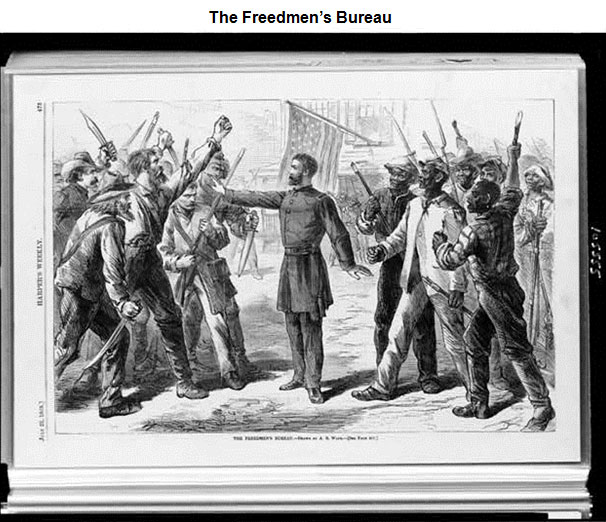
Source: The Freedman’s Bureau, Alfred Waud, Library of Congress
The U.S. Congress established the Freedmen’s Bureau to assist former slaves as they acclimated to their new lives. Read the following excerpt from the Texas State Library and Archives Commission; it describes the role of the Freedmen’s Bureau in Texas.
“The Freedmen's Bureau was established in 1865 by the federal government to assist African Americans with a just and smooth transition into the social system. The Texas Bureau had 12 local agents; five were civilians. In addition to providing relief work and court protection, the bureaus organized schools for the freedmen, and 4,500 had enrolled by mid-1866. Some of the African Americans who later became Texas delegates and legislators worked for the Freedmen's Bureau. These included George Ruby of Galveston, Jeremiah Hamilton of Bastrop, and Richard Allen of Houston. The bureau was phased out in Texas in 1868.”
– The 1870’s: The Freedmen’s Bureau
The Freedmen's Bureau
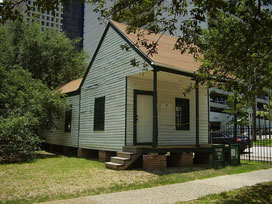
Source: FourthWardCottageSam HoustonParkhoustonTX1,WhisperToMe, Wikimedia
Freedmen in Texas established African-American communities throughout Texas. The cottage pictured here is from a freedmen’s town in Houston, which is now called Fourth Ward, near Houston’s downtown area.
This cottage dates back to 1866.
Not all Texans were ready for the social changes of Reconstruction. Many white Texans blamed the Freedman’s Bureau, and, as a result, several agents were killed. Texas also faced many political changes during Reconstruction; Texans were required to take specific steps created by President Andrew Johnson before rejoining the Union.
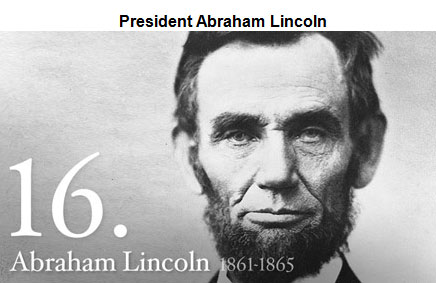
Source: 16al header sm, The White House
Abraham Lincoln was assassinated on April 15, 1865, just a few days after the Civil War ended. Vice president, Andrew Johnson then became president. Click on the image below to learn more about Andrew Johnson.
President Johnson created a plan for confederate states to rejoin the Union.
President Andrew Johnson’s Reconstruction Plan
The final step required all white males to pledge loyalty to the United States in order to regain the right to vote.

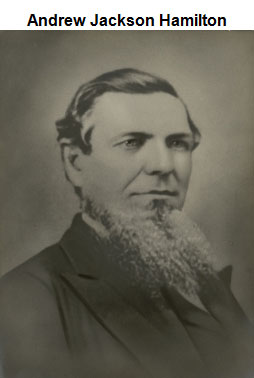
Source: Andrew Jackson Hamilton, Tarlton Law Library, University of Texas at Austin
President Johnson then appointed a Unionist as the temporary governor of Texas. Andrew Hamilton was appointed governor of Texas; he later called a Reconstruction convention to help Texas to rejoin the Union.
One of the main goals of the convention was to create a new state constitution. During the convention, delegates agreed to cancel the state’s war debts and end slavery. However, they failed to ratify the 13th Amendment, which would make slavery illegal in Texas.
James Throckmorton was elected governor of Texas.
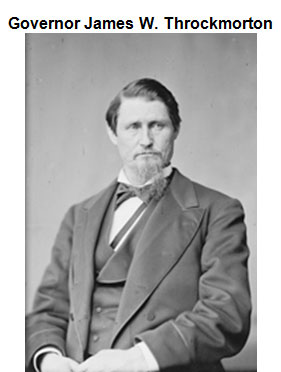
Source: t000246, Biographical Directory of the United States Congress
Delegates also approved “Black Codes,” legislation that denied African Americans basic civil rights in Texas.
Texas Black Codes
Based on the Black Codes in Texas, do you believe that African Americans were treated like other Texas citizens during Reconstruction?

Texas satisfied the requirements of President Johnson’s Reconstruction plan, and President Johnson allowed Texas to rejoin the Union. The U.S. Congress, however, did not support the move. Congress decided that Texas’ government had not been reconstructed, mainly because of the passage of the Black Codes. Therefore, Congress did not admit Texas into the Union.
In 1868, Texas was again given the opportunity to join the Union by ratifying the 14th Amendment. The 14th Amendment expanded the civil rights of all Americans, including African Americans. Texas and nine other confederate states refused to ratify this amendment. Congress then assigned the military to take control of Texas.
Under U.S. control, a new governor was elected in 1869. The state legislature ratified the 14th and 15th Amendments (the 15th Amendment gave African-American males the right to vote), and Texans took an oath of loyalty to the United States. On March 8, 1870, Texas was readmitted to the Union.
Texas went through these and other changes during Reconstruction. In the following sections, you will read more about these changes.